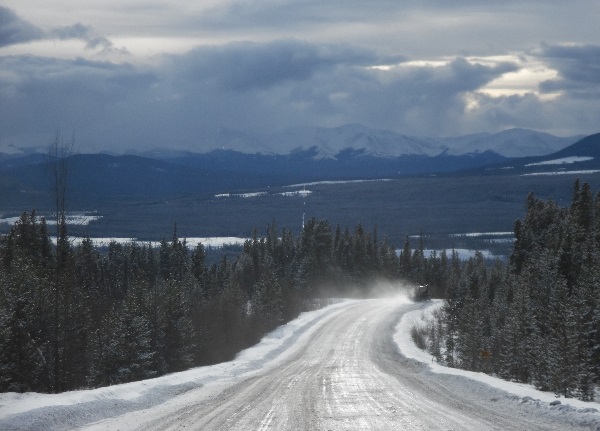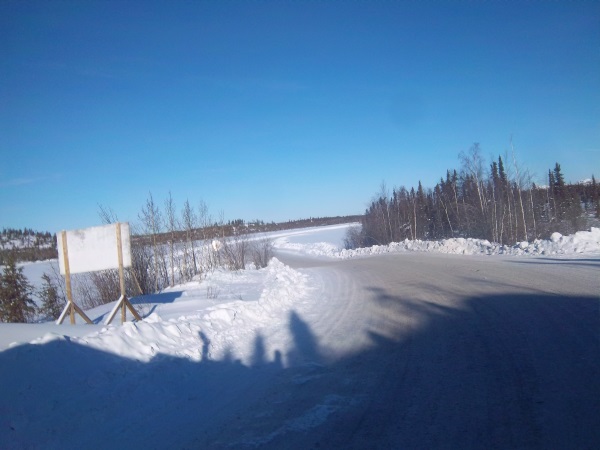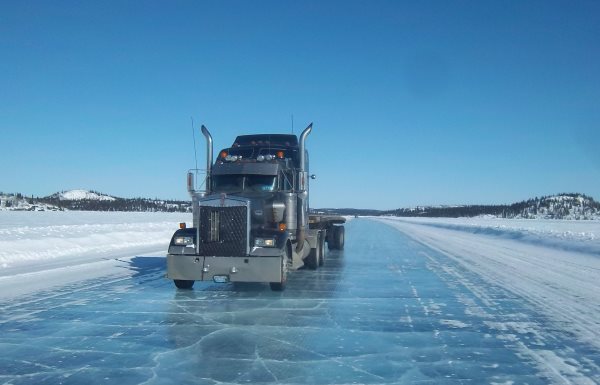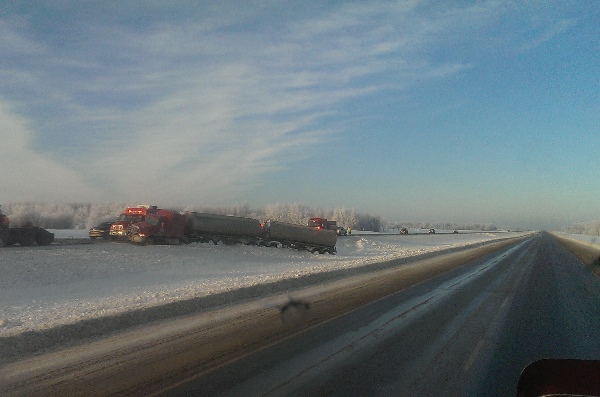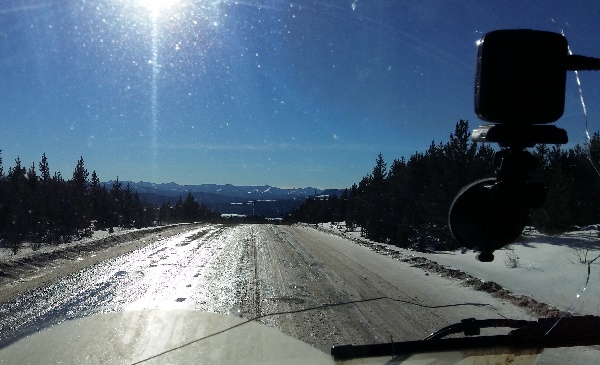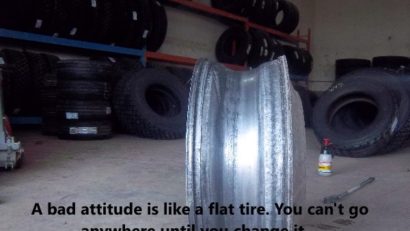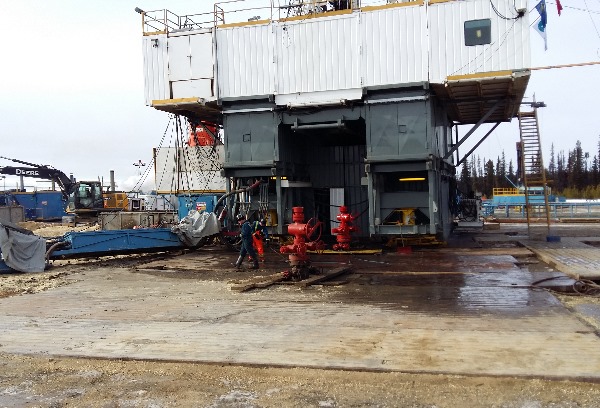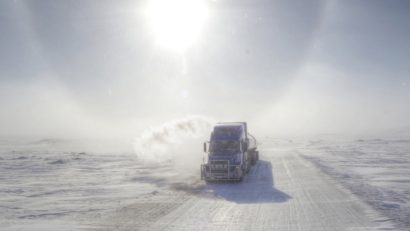- Ice Road Trucking e-book preview 1
- Ice Road Trucking e-book preview 2
- Ice Road Trucking e-book preview 3
- Ice Road Trucking e-book preview 4
- Ice Road Trucking e-book preview 5
- Ice Road Trucking e-book preview 6
- Ice Road Trucking e-book preview 7
- Ice Road Trucking e-book preview 8
- Ice Road Trucking e-book preview 9
- Ice Road Trucking e-book preview 10
- Ice Road Trucking e-Book preview 11
- Ice Road Trucking e-book preview 12
- Ice Road Trucking e-book preview 13
Welcome to ice road trucking e-book preview 8 where the story touches on driving experience, moral intelligence, and doing the right thing, at the right time and for the right reasons.
“You can take a road too slow every time, but you can only take it too fast once.”
The speed limit was a maximum of 70 km/hr with many of the bends marked at 50 or 60. There was also an S-curve section marked at 40 called the “Snake Pit”. I saw no value in travelling any faster than 60 km/hr. There were only a few straighter smooth sections that you could roll along at 70 or higher.
The problem I had throughout the season was maintaining 1 km spacing when you had an overly aggressive leader. It was easy to fall behind by as much as 5 or 10 km when you had a reckless leader pushing the convoy. I just let them go and caught up to them at the first security checkpoint at the Meadows. What concerned me was how would new drivers responded to this kind of pressure?
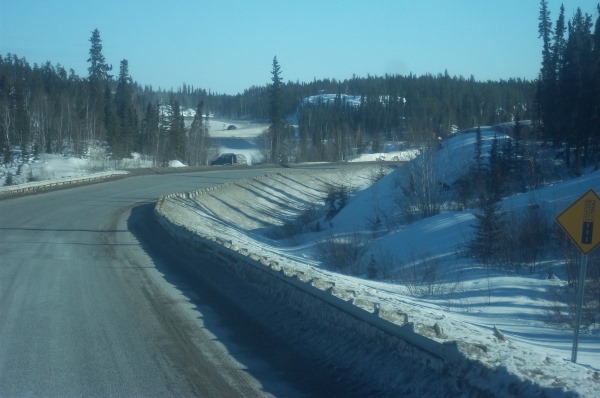
Ice Road Trucking e-book preview 8. The narrow twisting curves of the Ingraham trail heading north to the start of the ice road.
There were too many drivers acting like they had something to prove instead of respecting the road, their equipment, and other users. From talking to other drivers, there were many of us that felt this way. It was the drivers with off road experience, or drivers that owned the equipment that complained about the speeding. Most drivers respect their equipment when they’re paying for the repairs. Your truck is your income. If the truck is down for repairs, you don’t make any money. Pushing your equipment to the limit will eventually catch up to you costing you time, money, or worse.
So, having the knowledge from driving experience helps drivers to stay safely on the road and protect their equipment from possible damage. These drivers are using luck to make the right decisions at the right time just like I did for much of my career. I told you in chapter 2 when I mentioned luck that something was still missing.
A professional driver always does something for the “Right” reasons based on practical wisdom and moral intelligence.
“Moral intelligence is the capacity to understand right from wrong; it means to have strong ethical convictions and to act on them so that one behaves in the right and honourable way”.
̴ Dr. Michelle Borba
In the case of Ingraham Trail, the right reason for prudent driving was to respect other drivers and the local residents. This meant slowing down to avoid showering someone’s windshield with gravel or rocks when you passed them, and turning off a loud engine brake passing residences. Now you are doing the right thing, at the right time, for the right reasons, and there is no selfishness or aggression.
I started this chapter with a quote I’ve heard and seen a number of times in my life. I like it, but it’s also easily misunderstood and can sound like a catch 22.
“Good judgement comes from experience, but experience comes from poor judgement.”
It doesn’t necessarily have to be your “Poor judgement” where you gain the experience. Just make sure you aren’t the one suffering from someone else’s poor judgement in the process. This is why I mentioned “Moral Intelligence” above. Even if you have no experience, moral intelligence still allows you to react accordingly.
Remember that experience comes from what you have observed, encountered, or undergone. It’s not just about learning from your own mistakes as this quote suggests. Defensive driving courses do this. You learn from the experience of others, but defensive driving courses still don’t make you a professional driver.
So as far as trucking goes, professional drivers always do the right thing, at the right time, for the right reasons. I’ll get into more of this in chapter 6 along with the philosophy of practical wisdom.
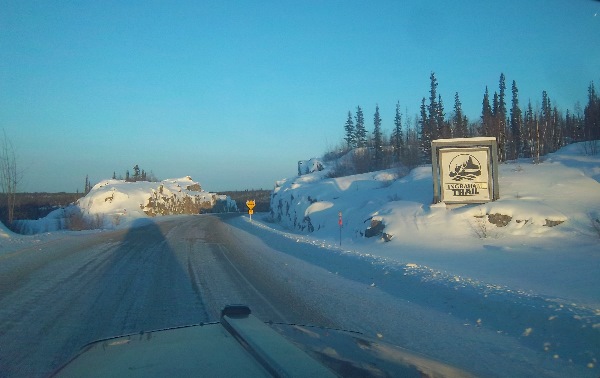
Ice Road Trucking e-book preview 8. The view starting out on the Ingraham Trail. Yellowknife, Northwest Territories
The Ingraham Trail was pretty rough in places with what I called, “suspension breakers”. Reckless driving could easily lead to busted air bags, broken springs, tire blowouts, or even ditched trucks. These bad experiences from poor judgement happened to both rookies, and aggressive experienced drivers.
Unfortunately, an off road rookies’ problems can easily come from trying to keep up to an aggressive leader on the ice roads. It’s easy to say they should know better, but that kind of undue pressure is difficult for a rookie to handle. There’s a lot of pressure on ice road rookies that are trying to gain experience and prove their worth. The kind of experience you get from poor judgement (whether your own, or someone else’s) can easily end your career.
Thanks for reading Ice Road Trucking e-book preview 8
Want to see more?…
